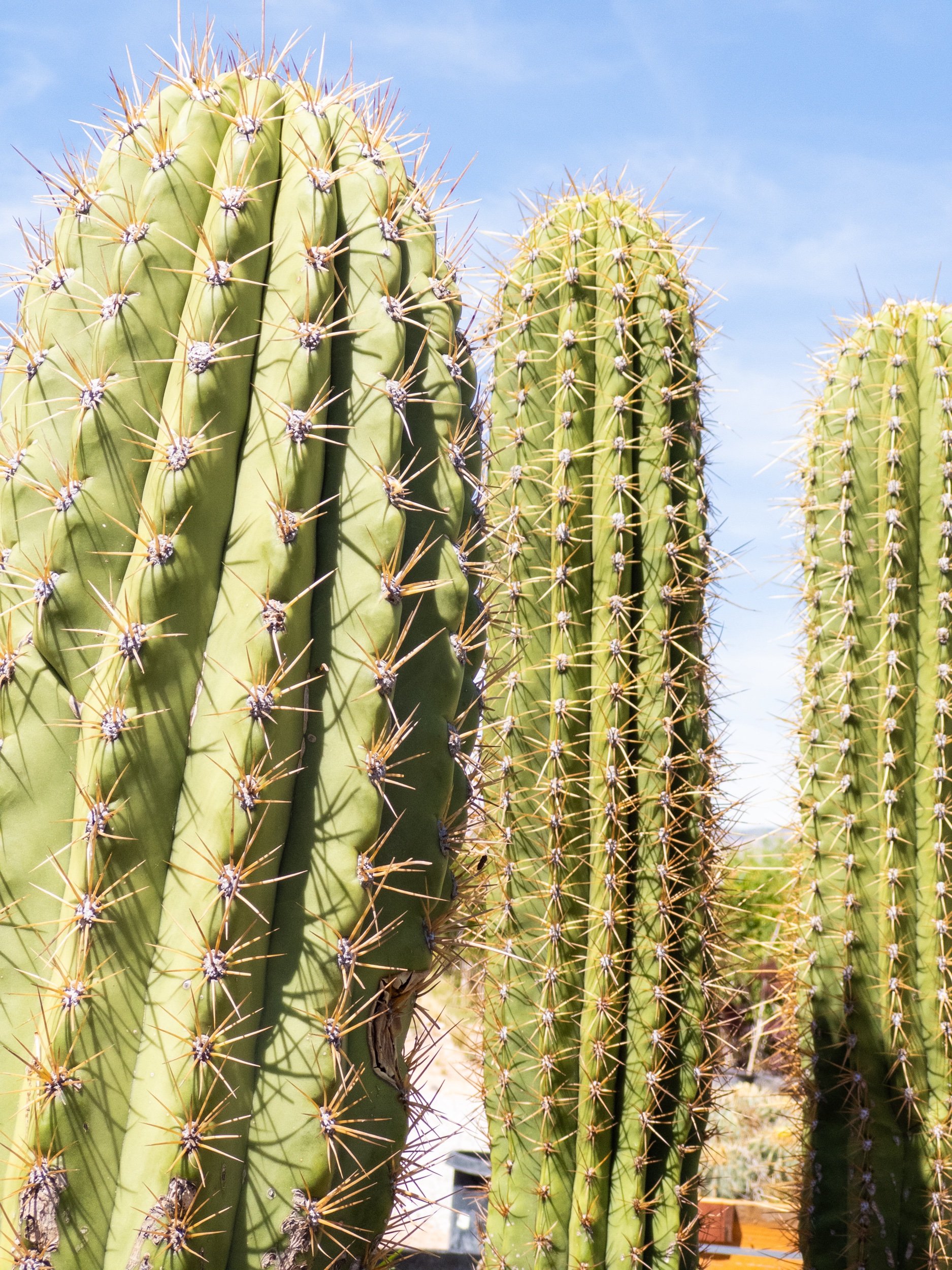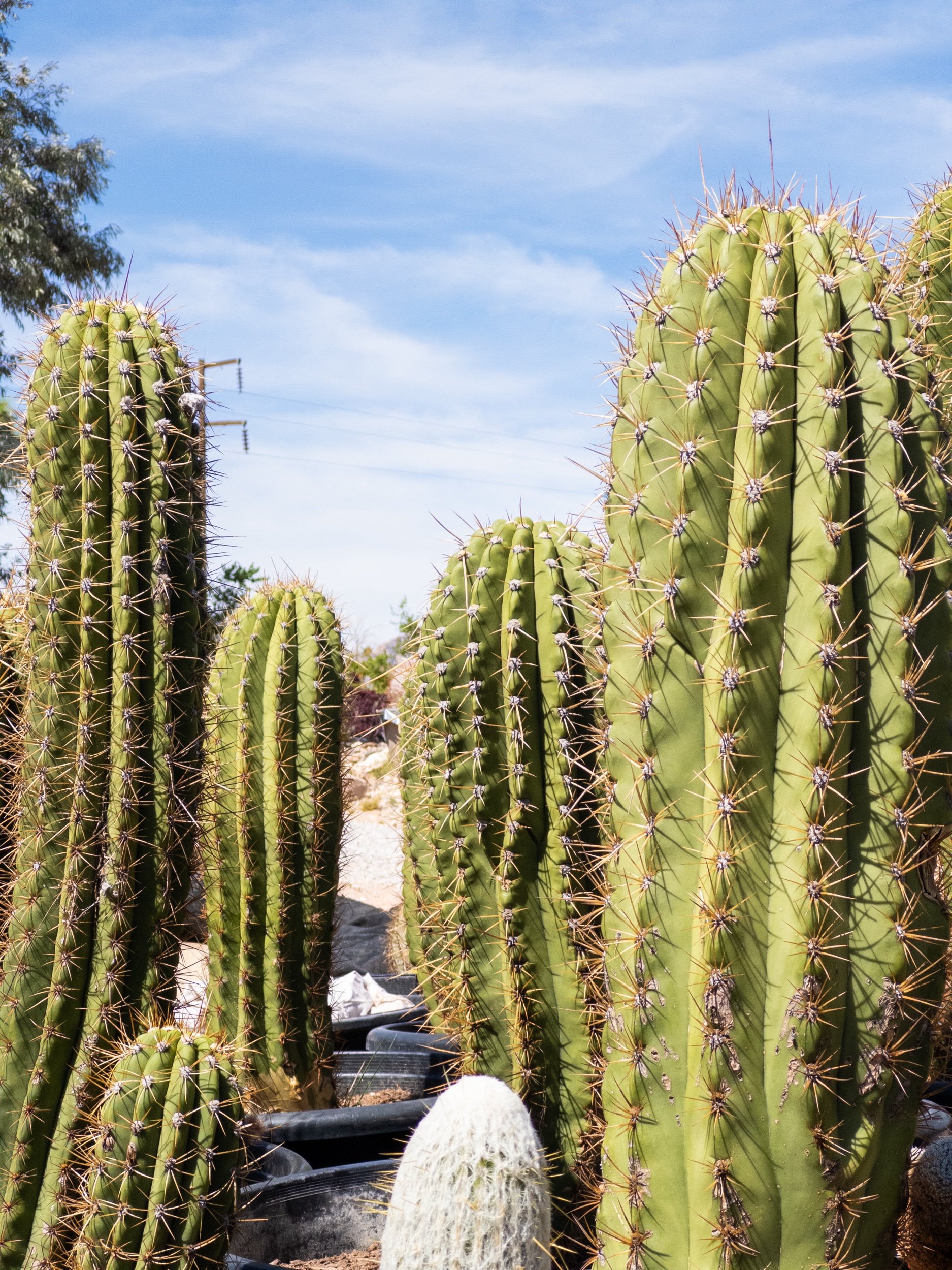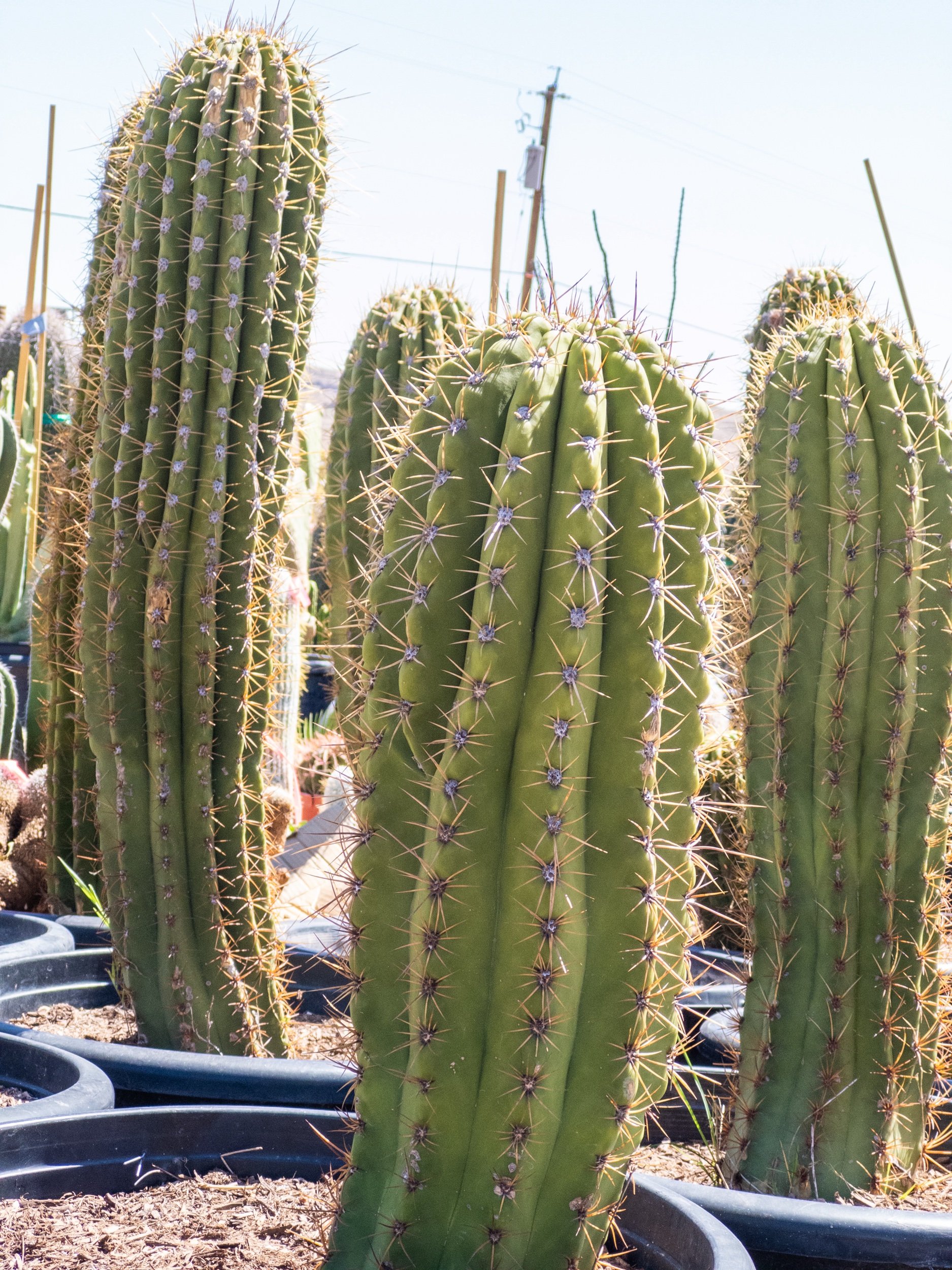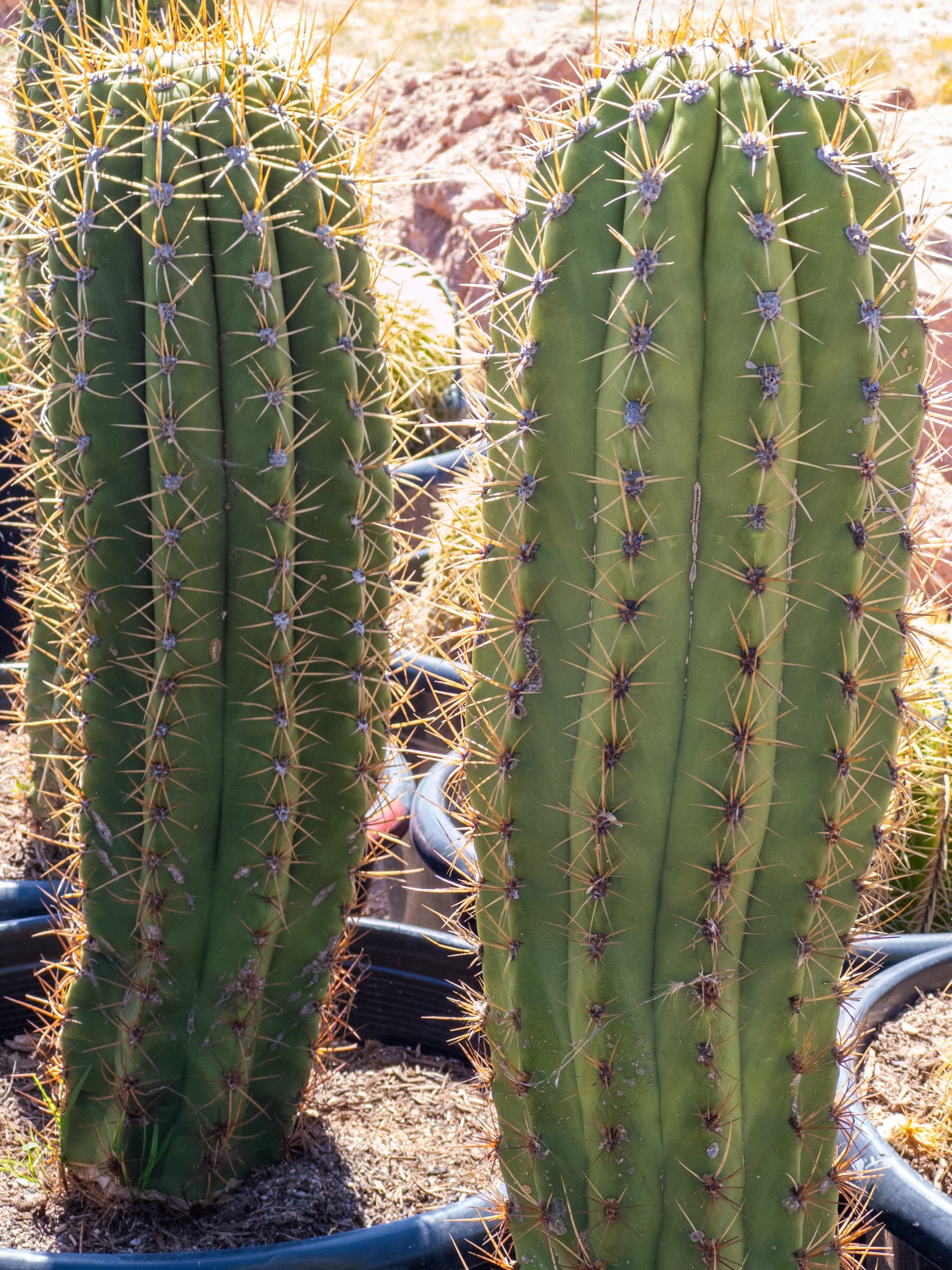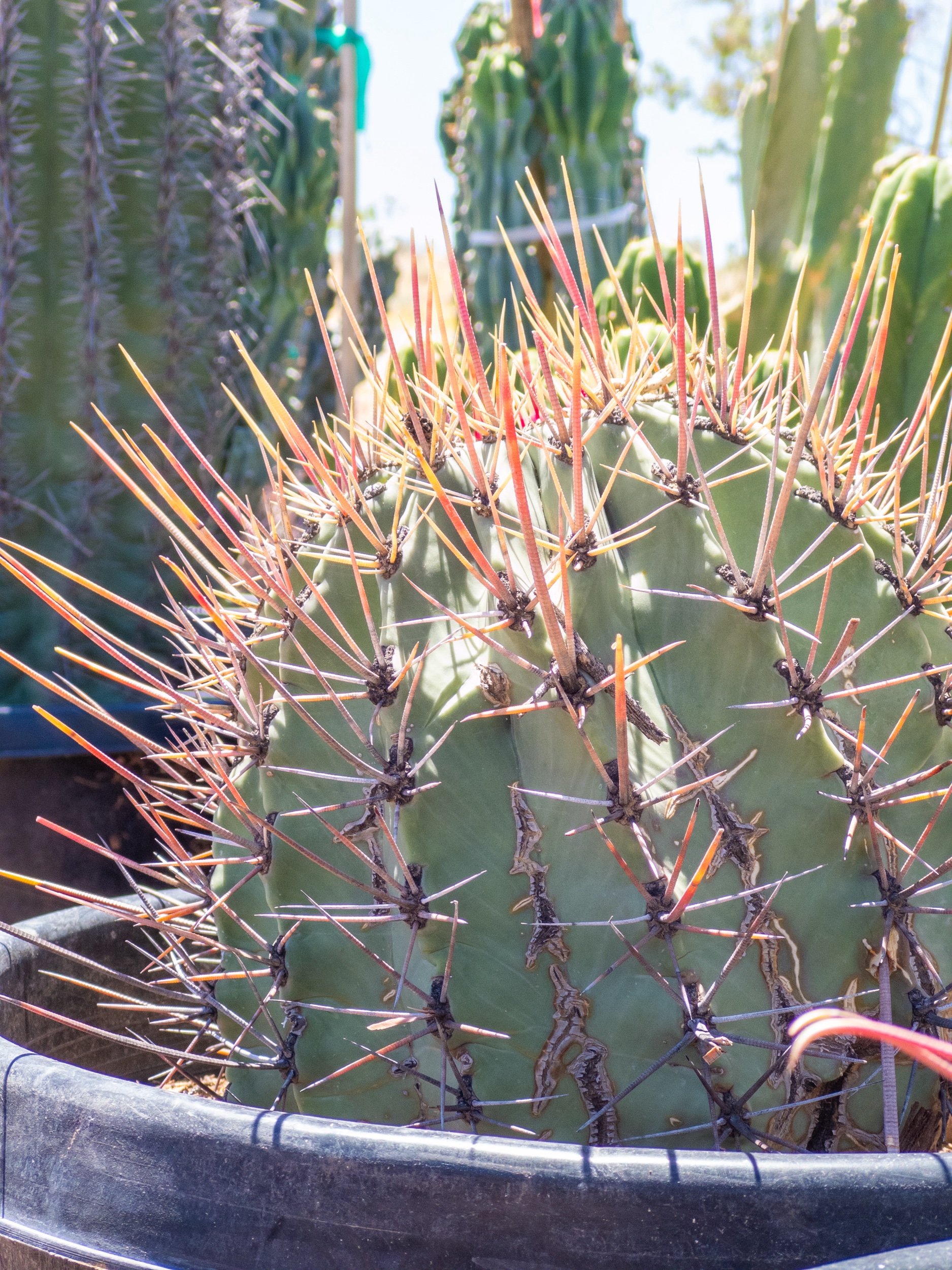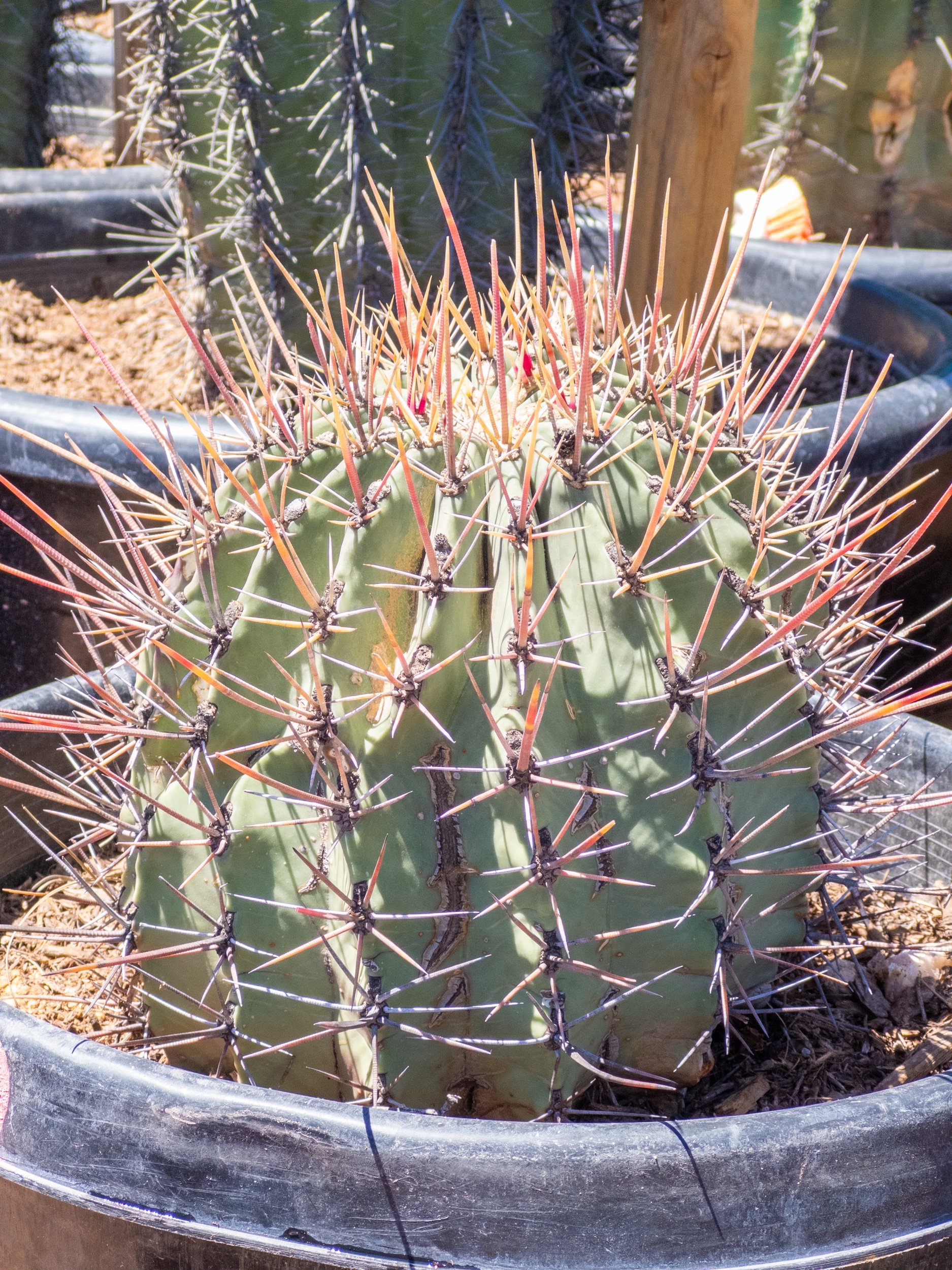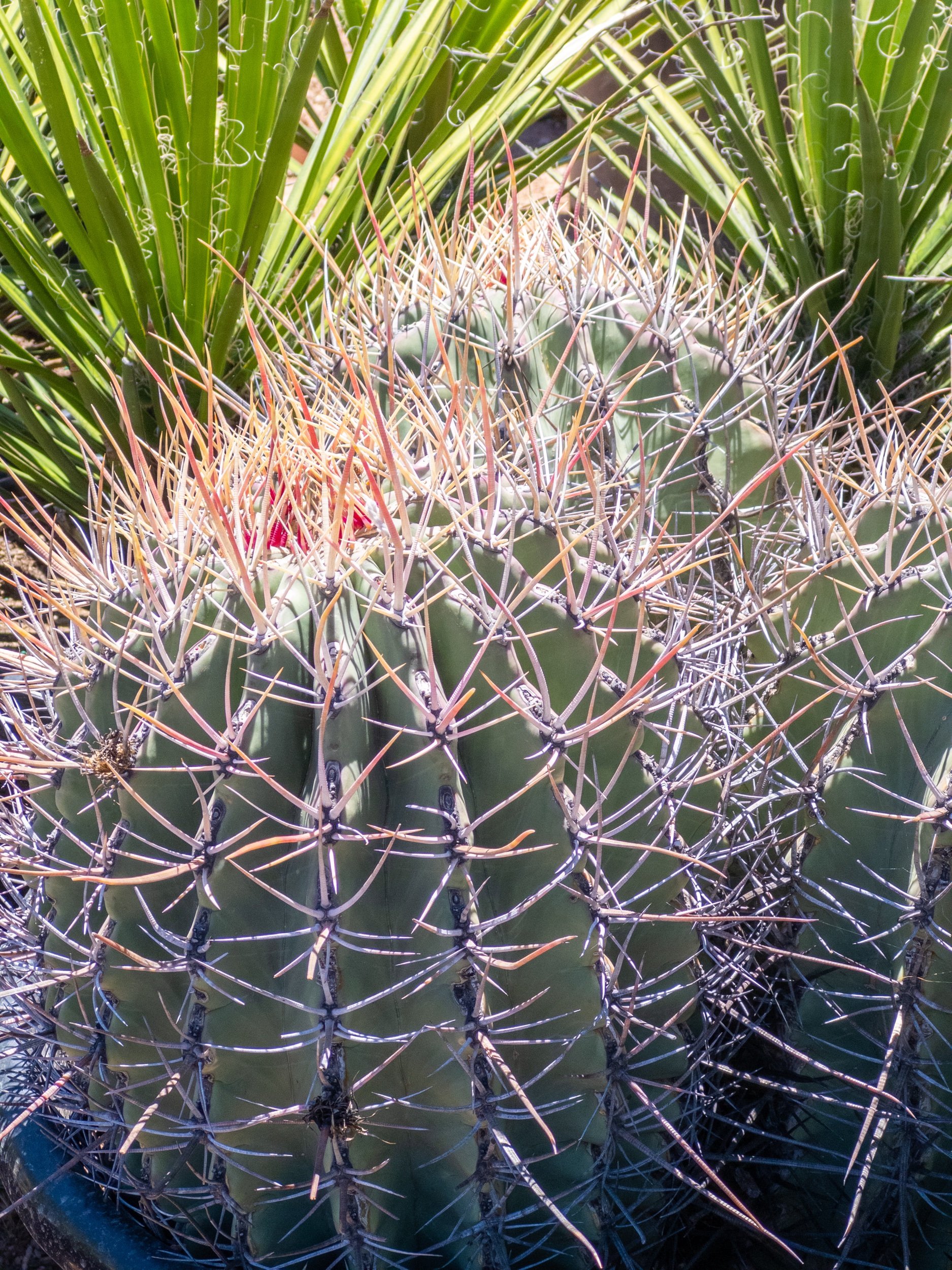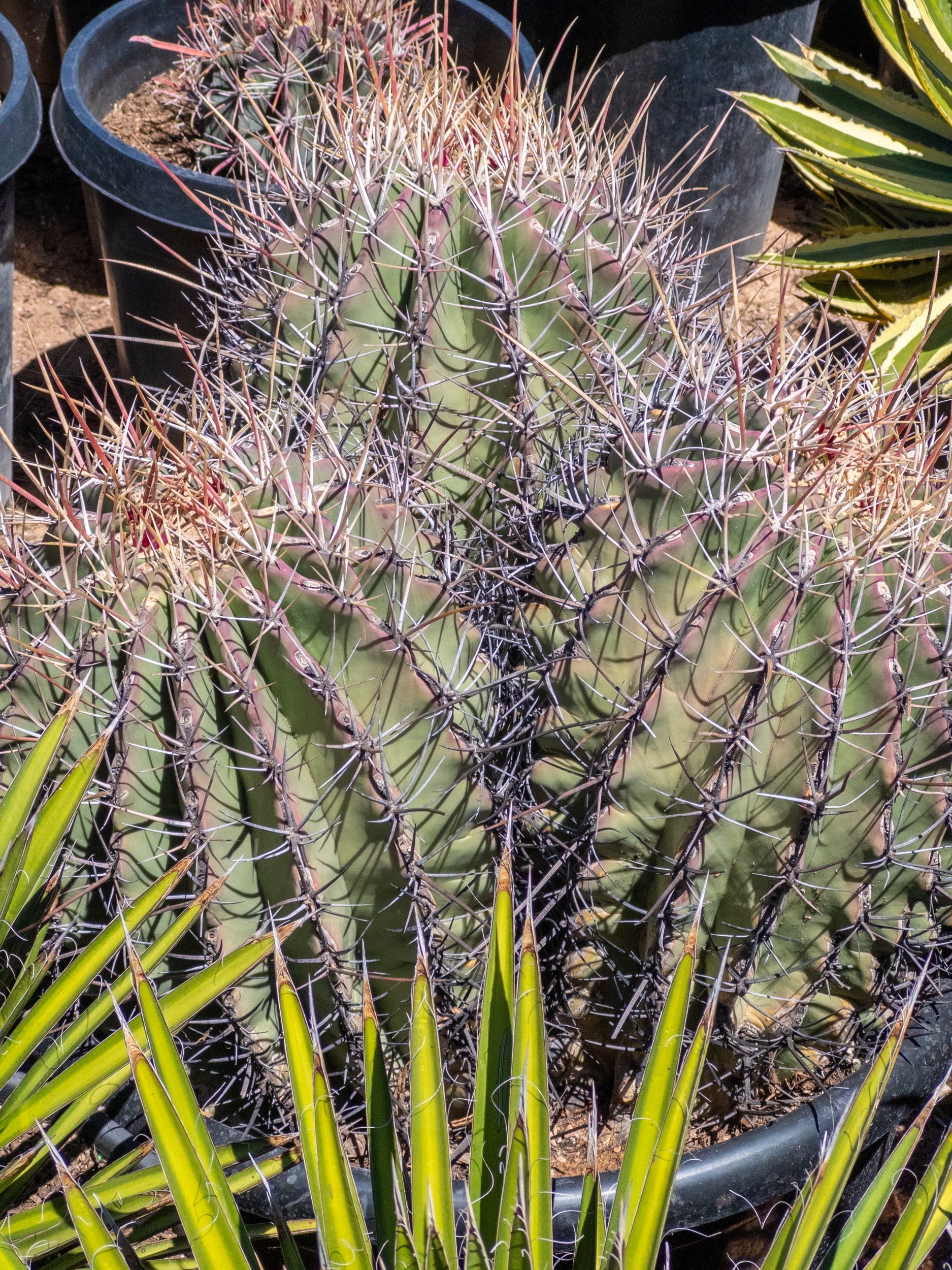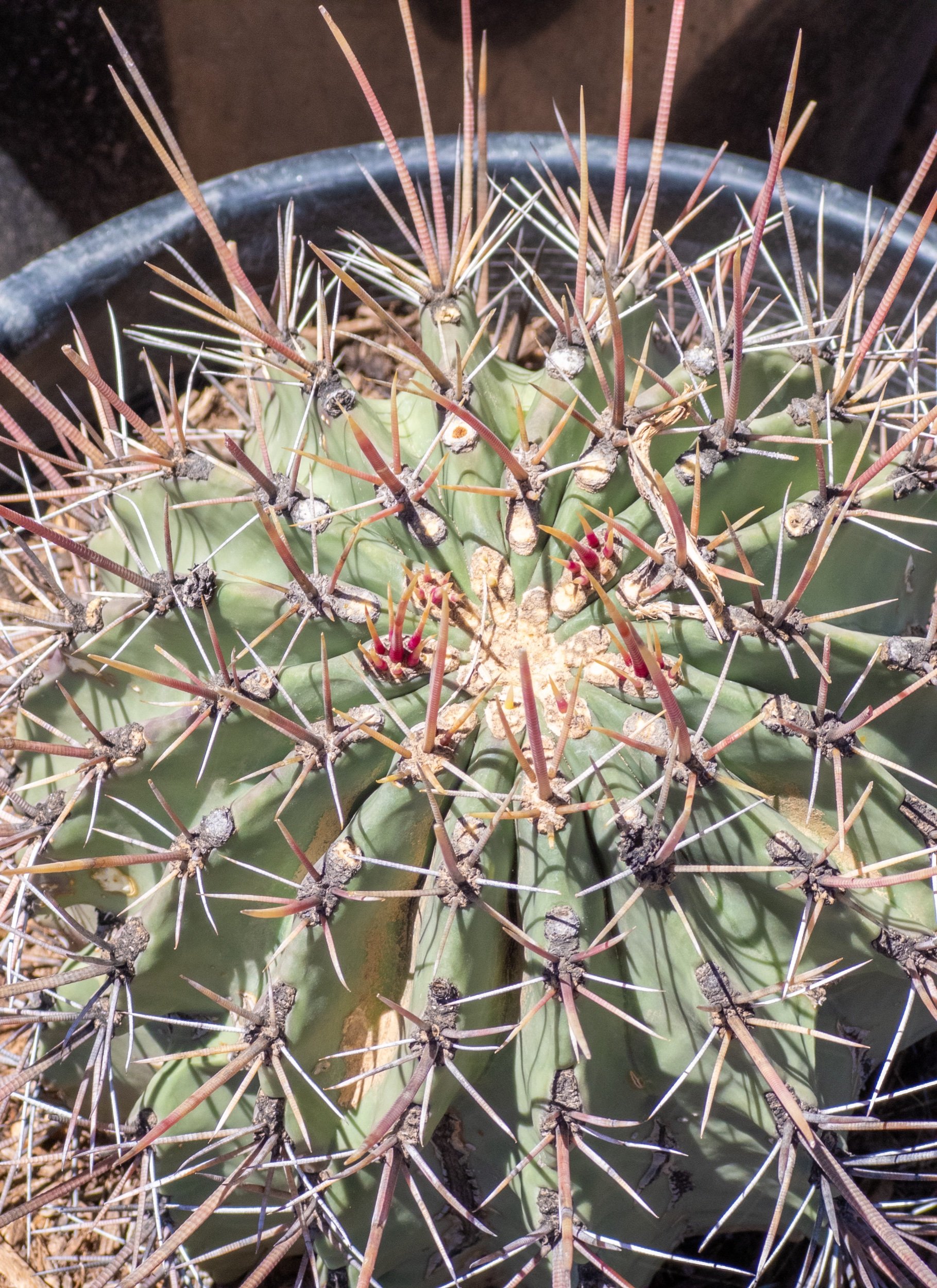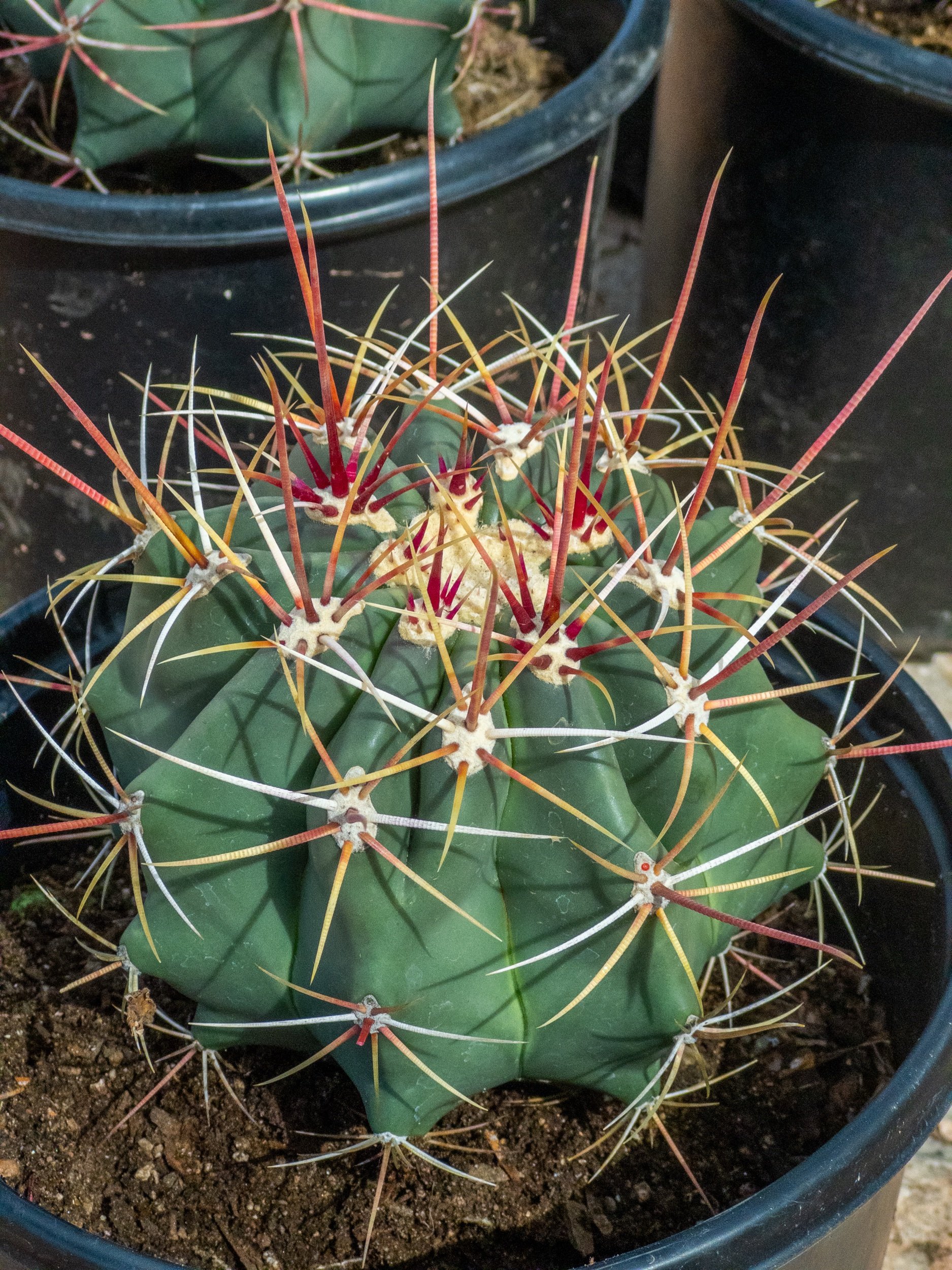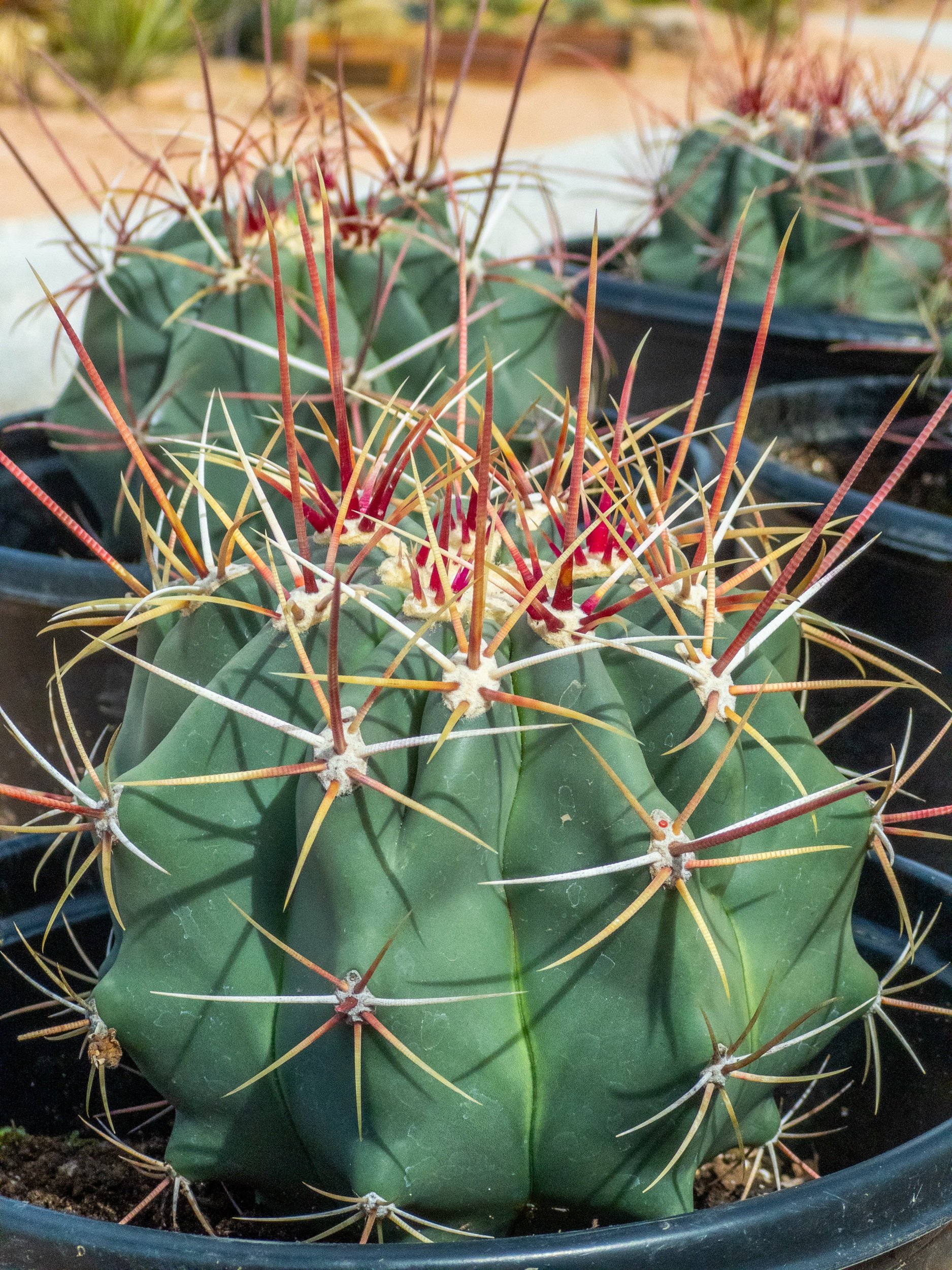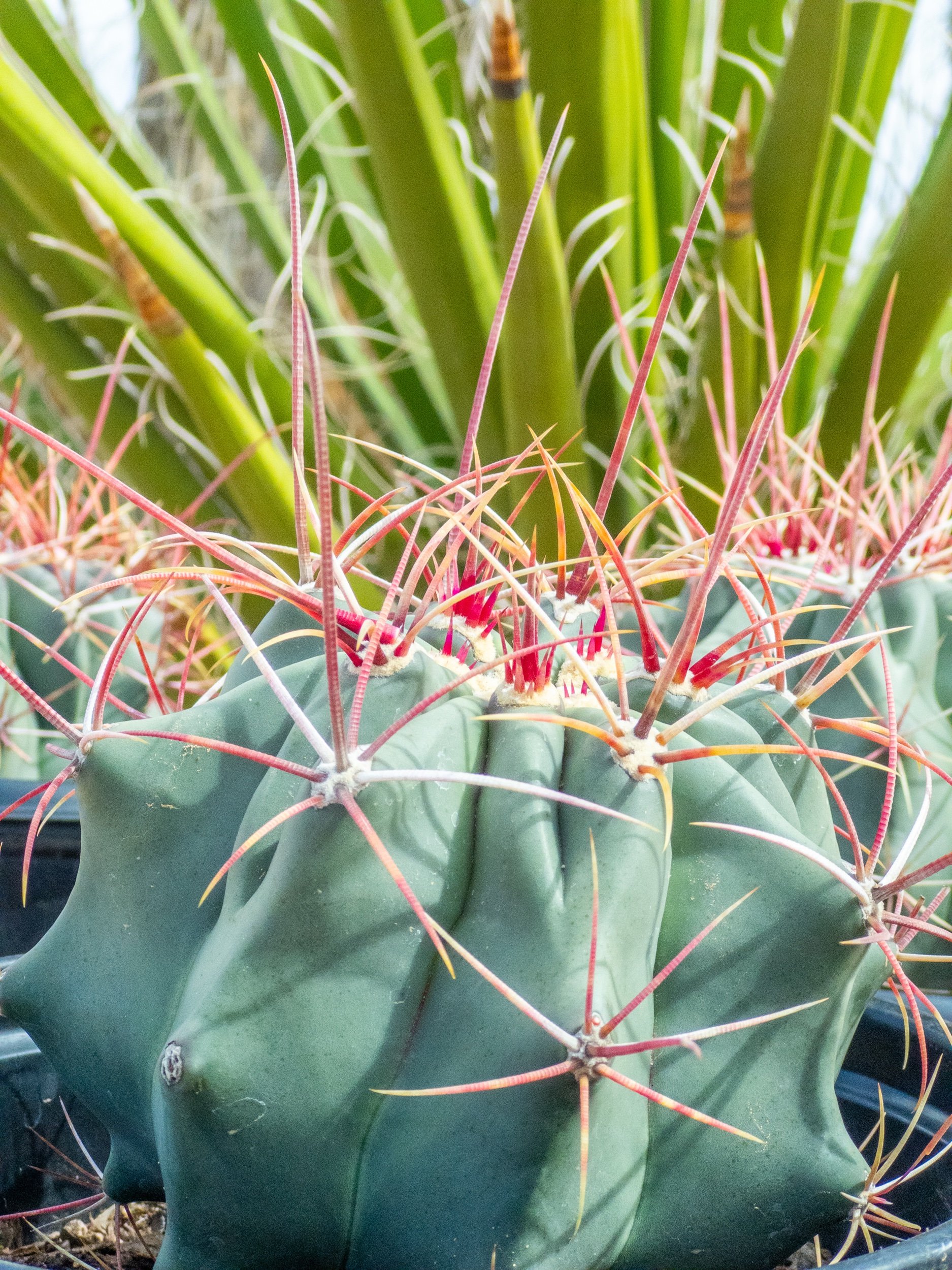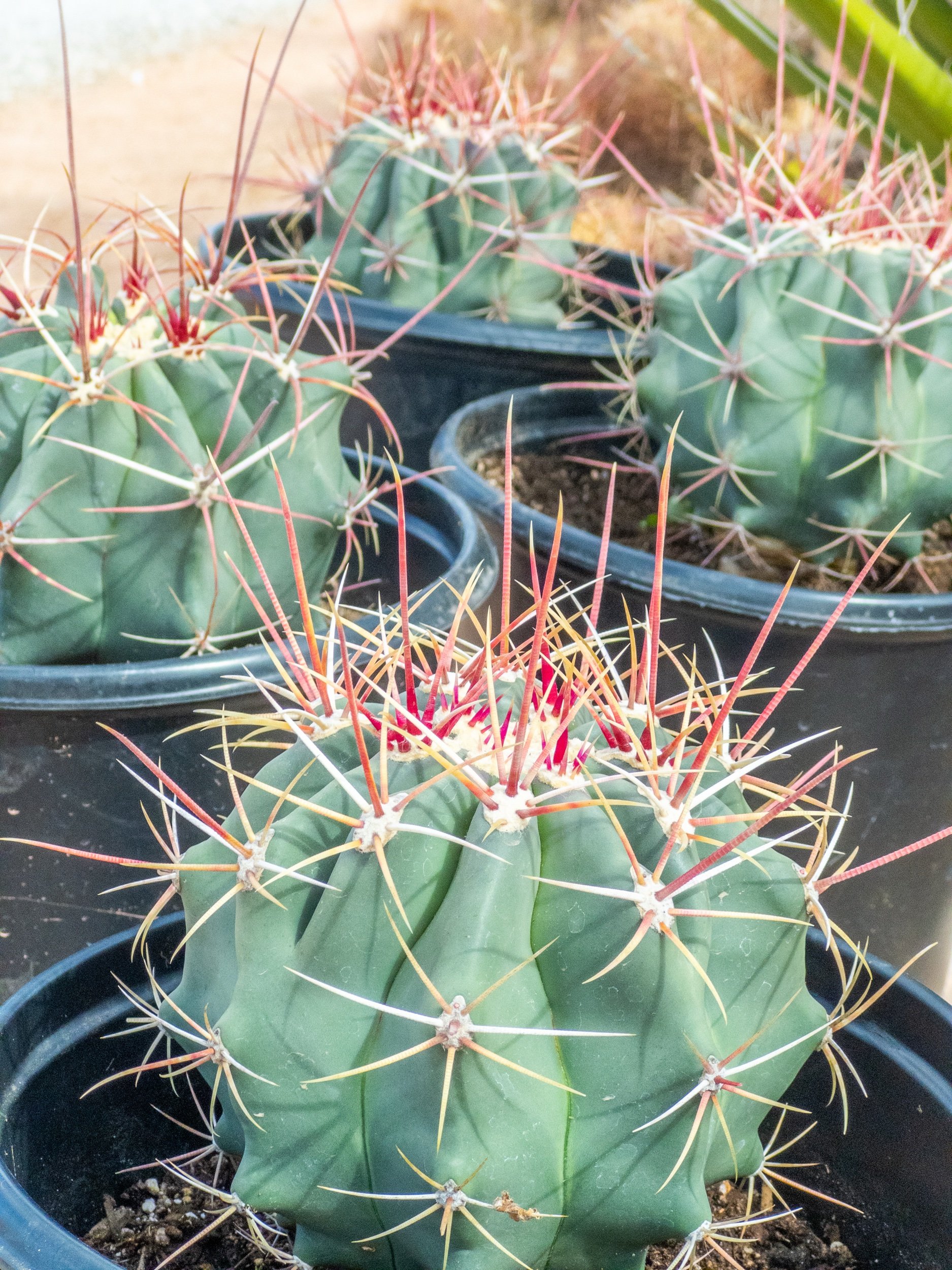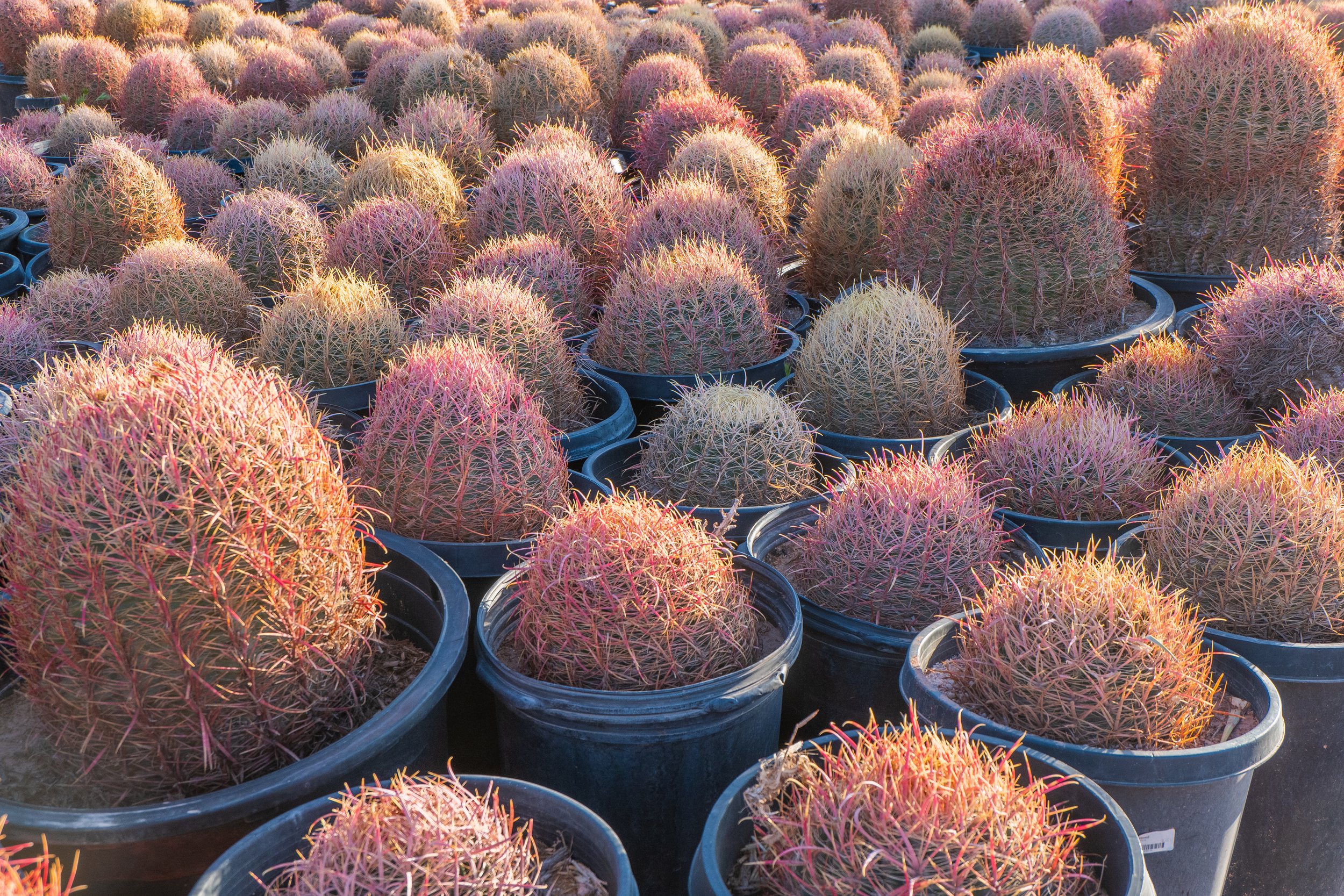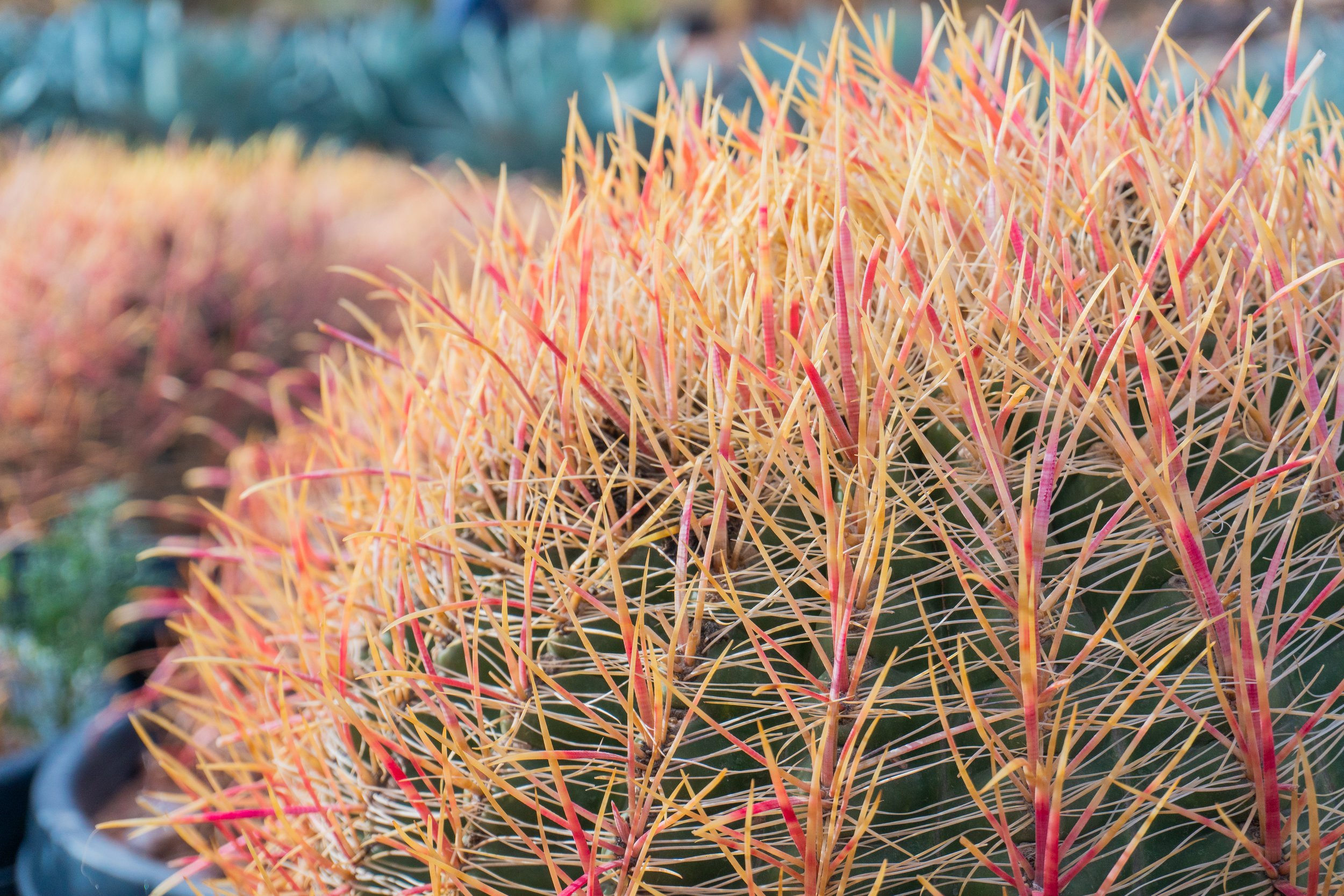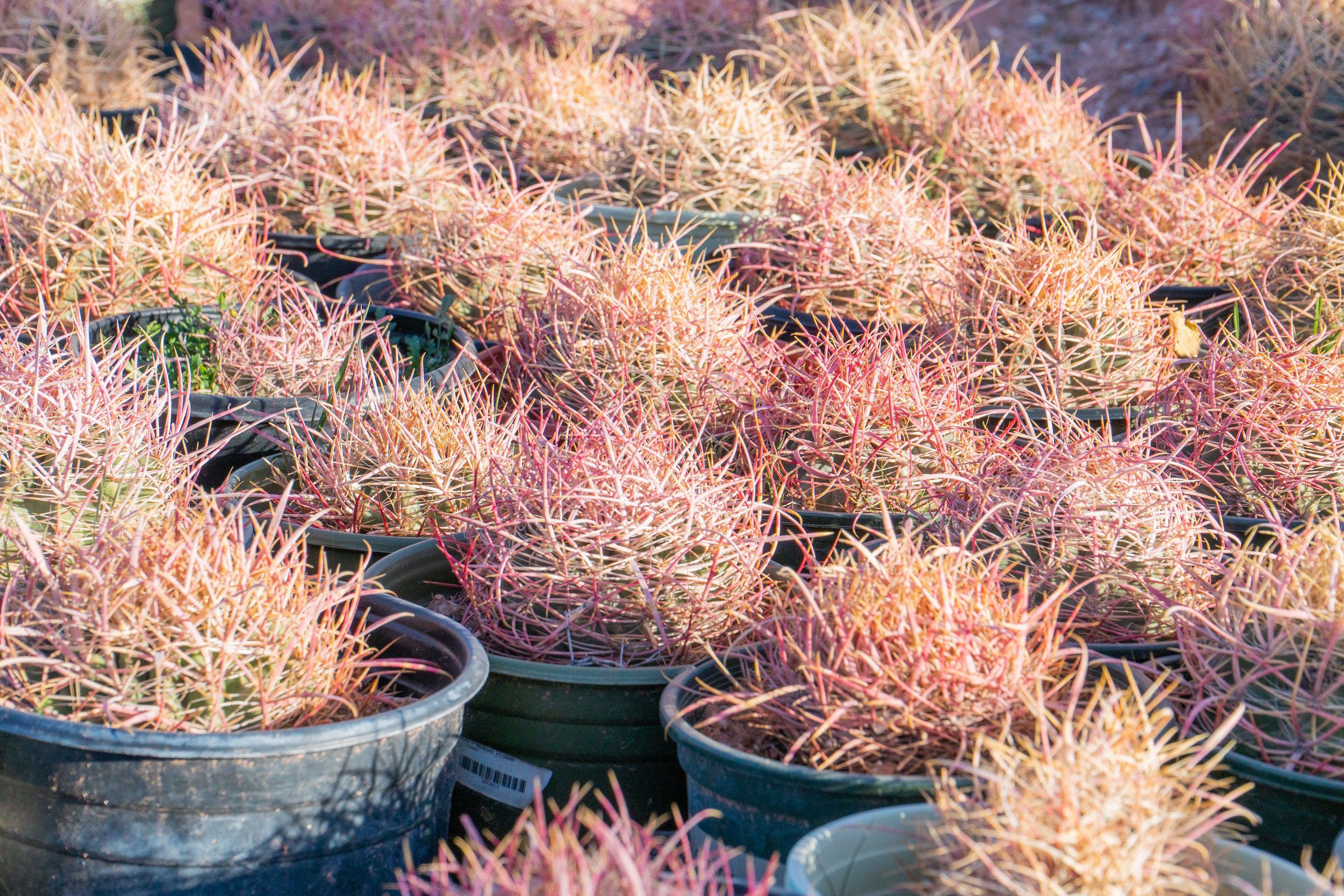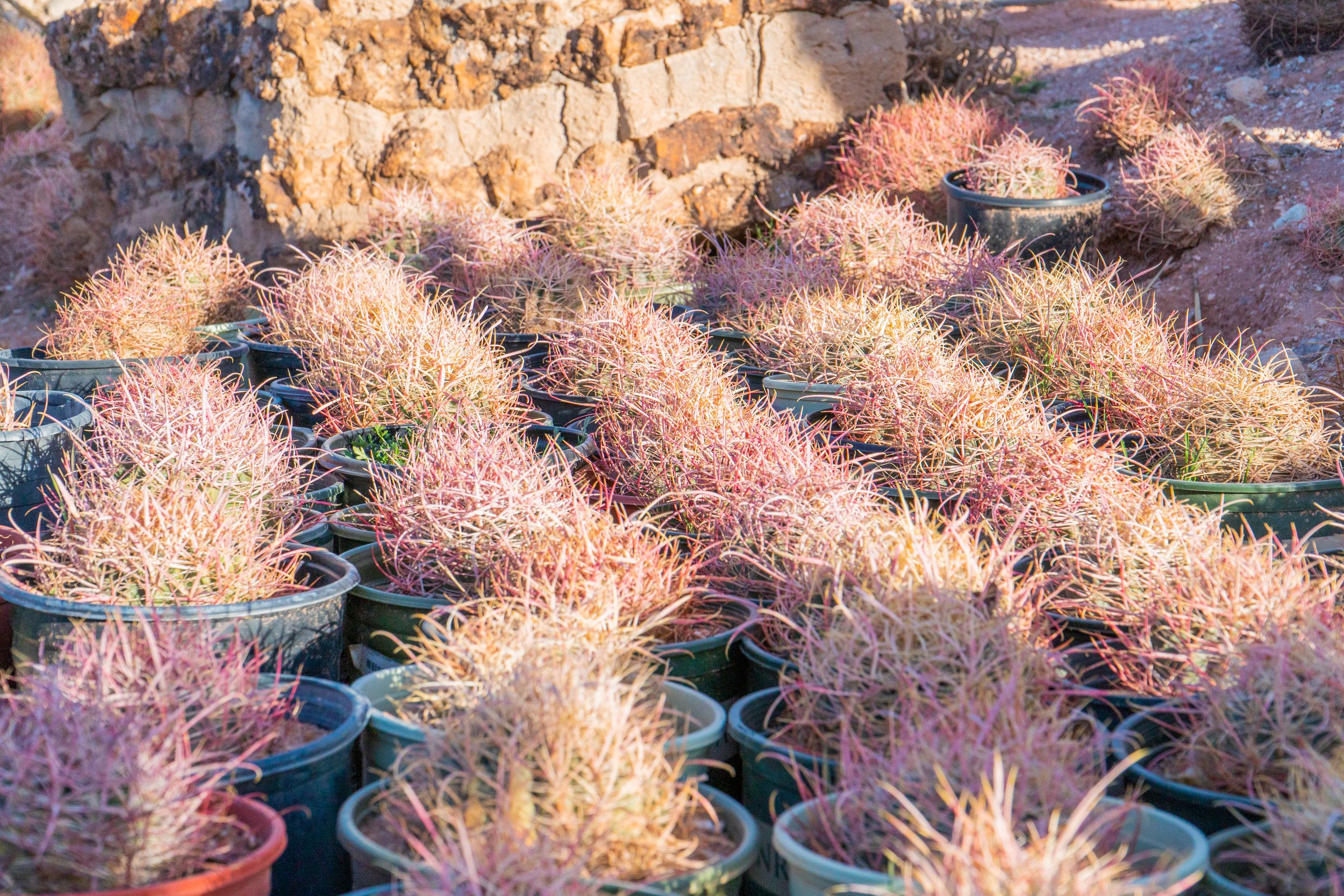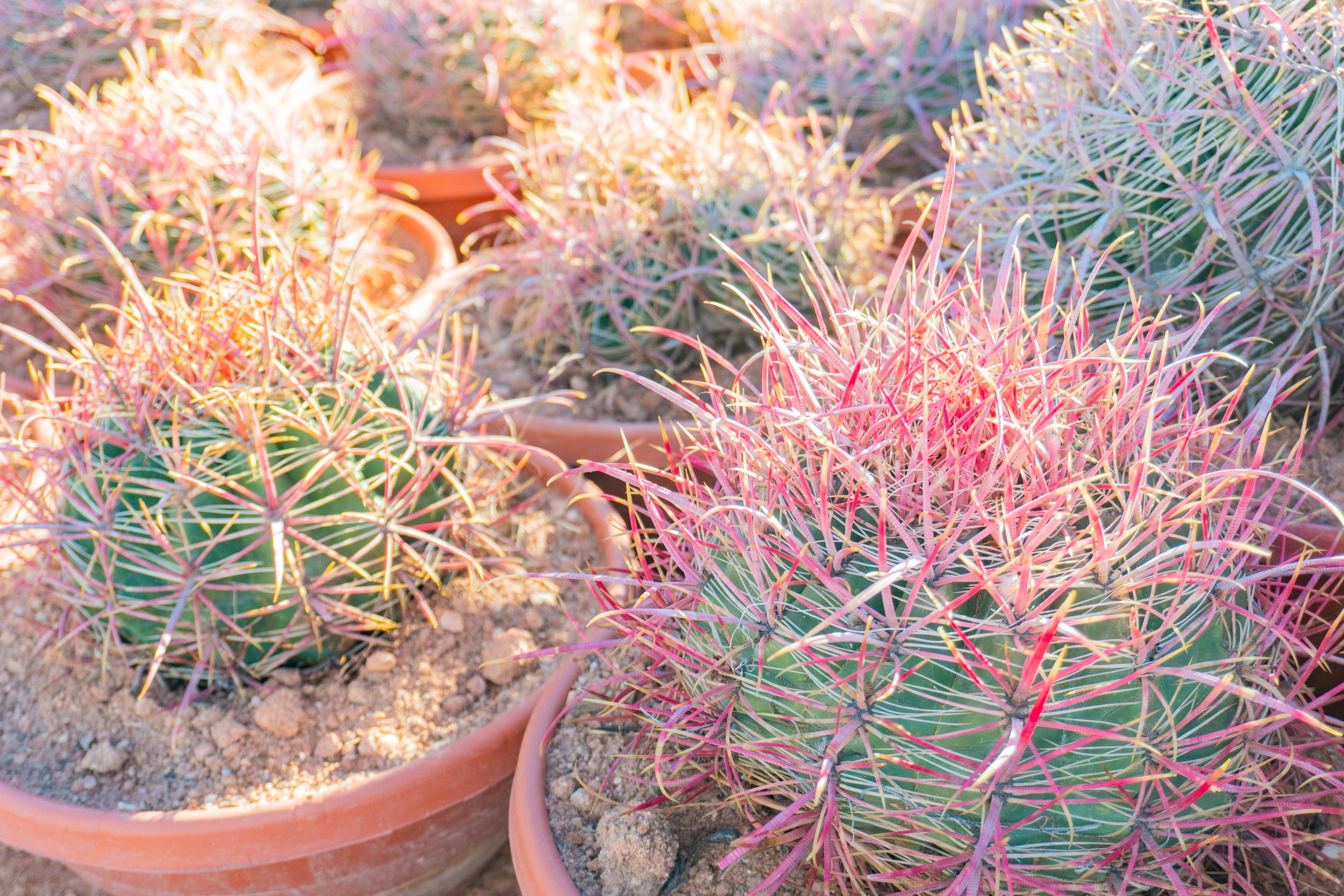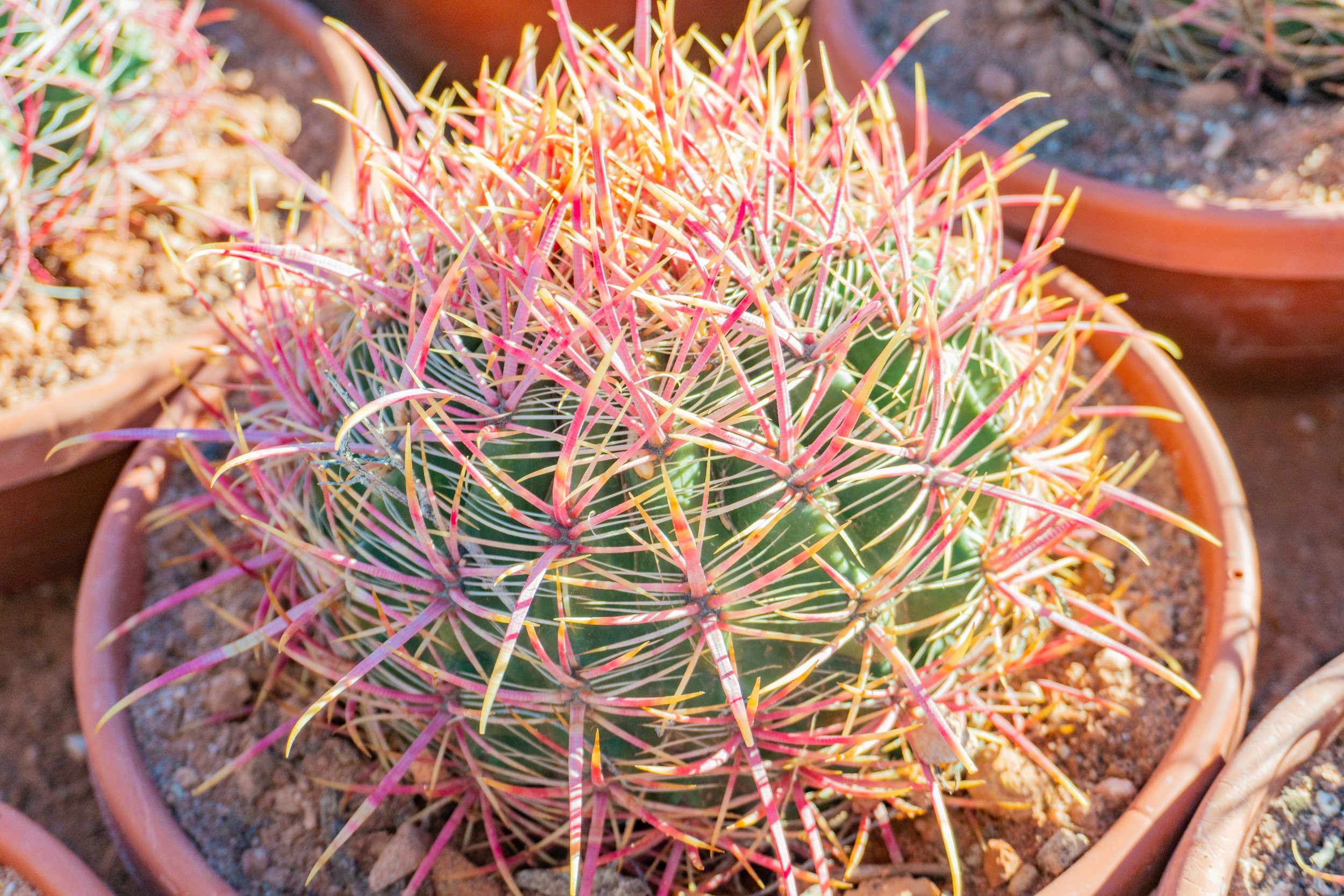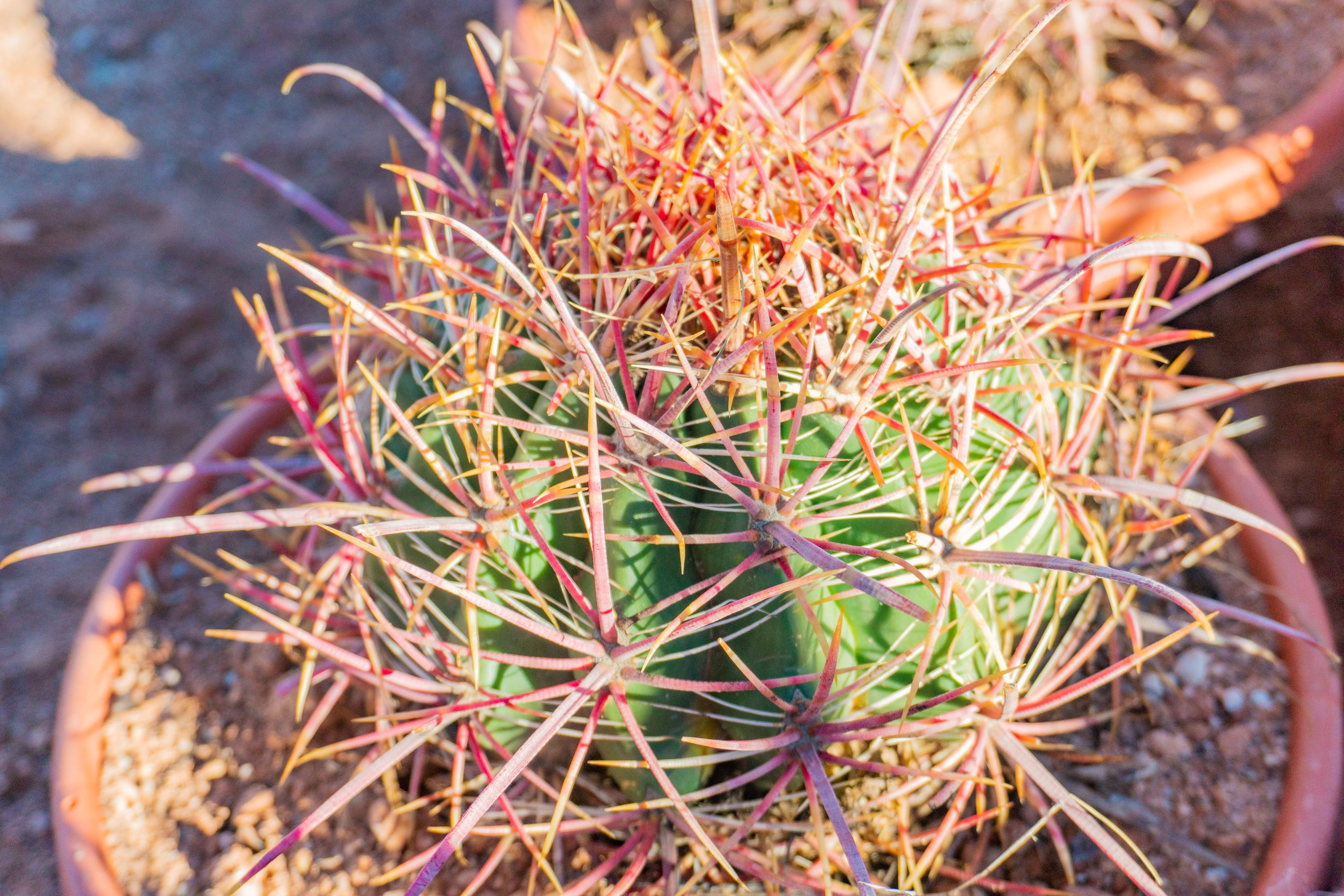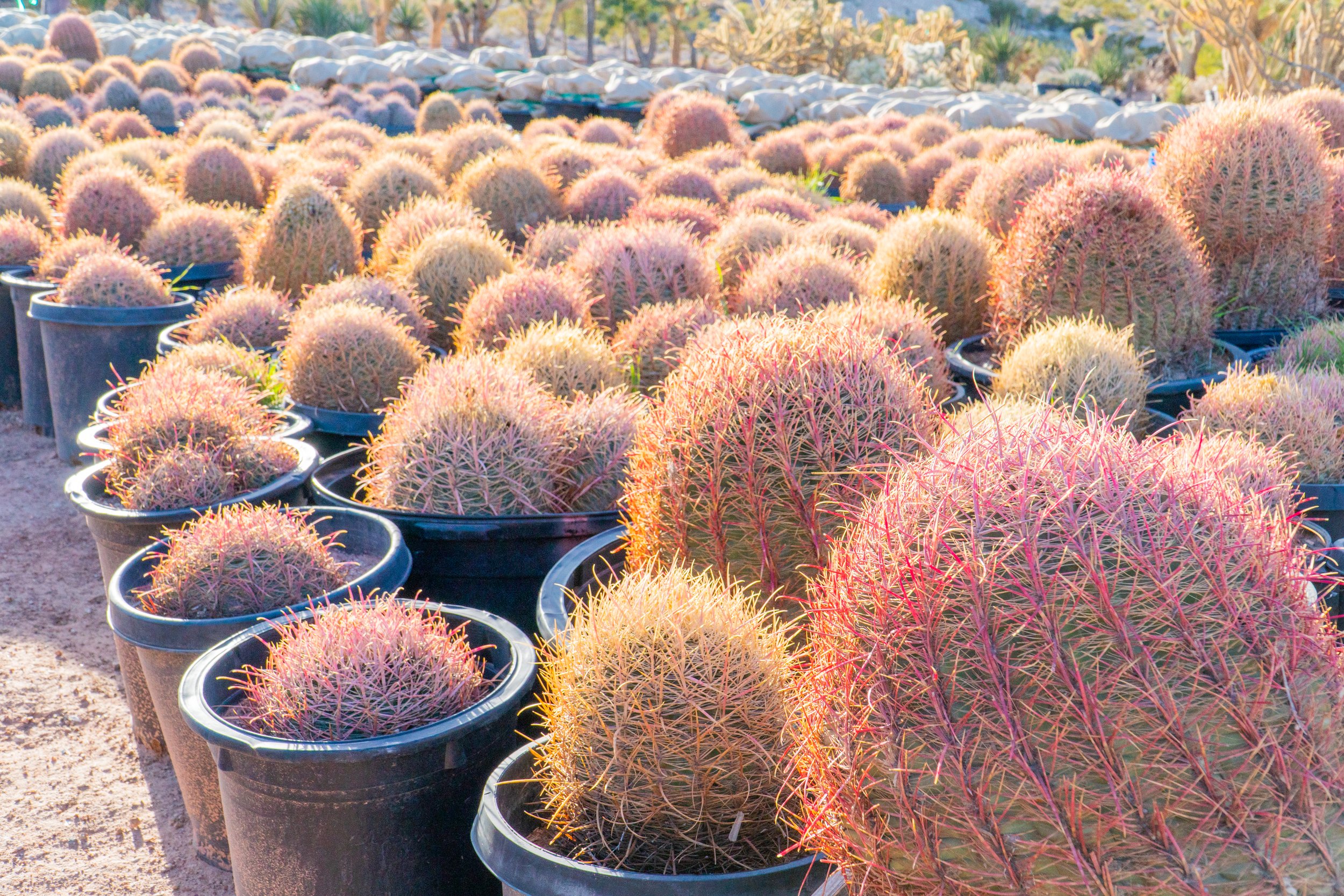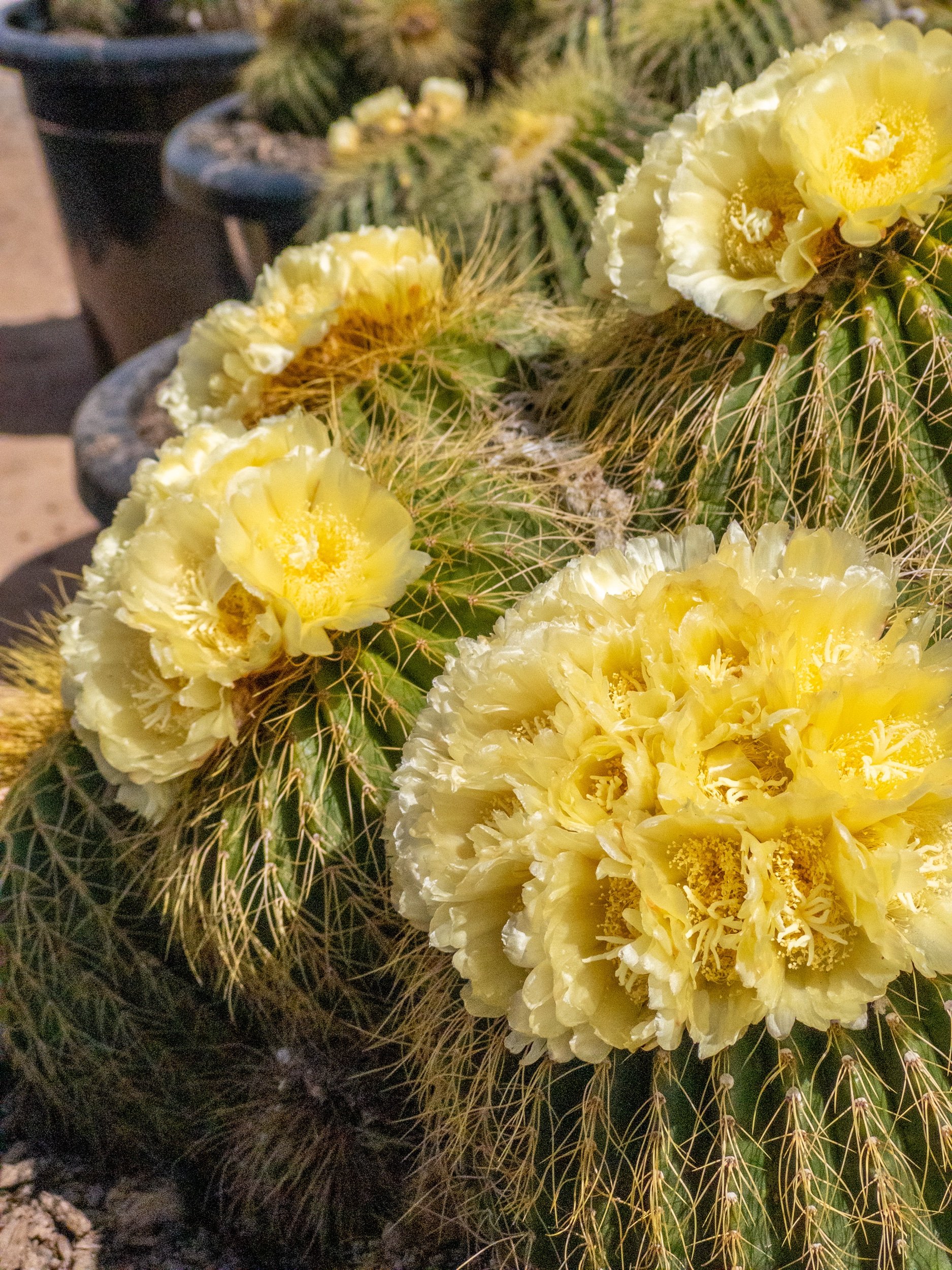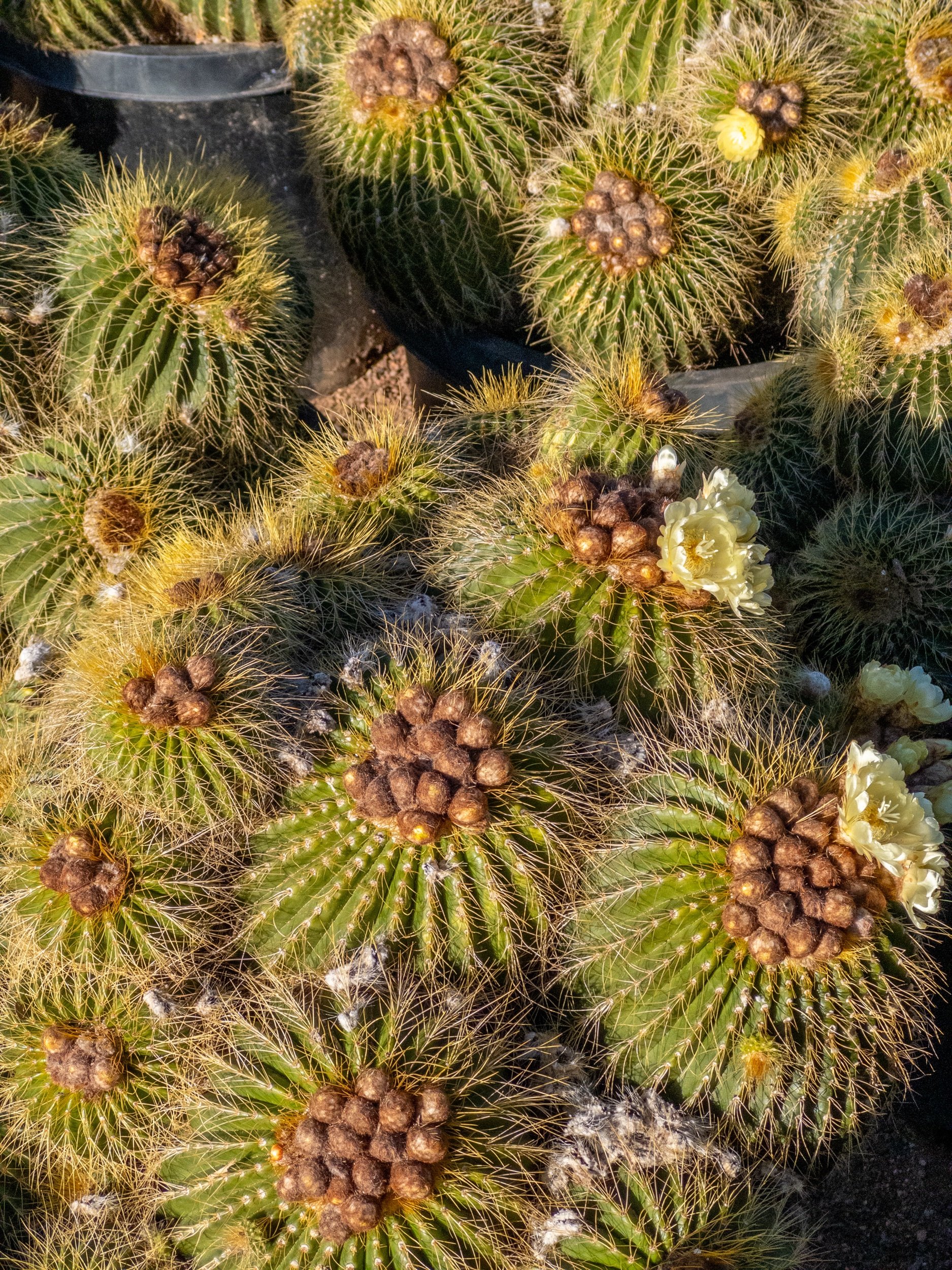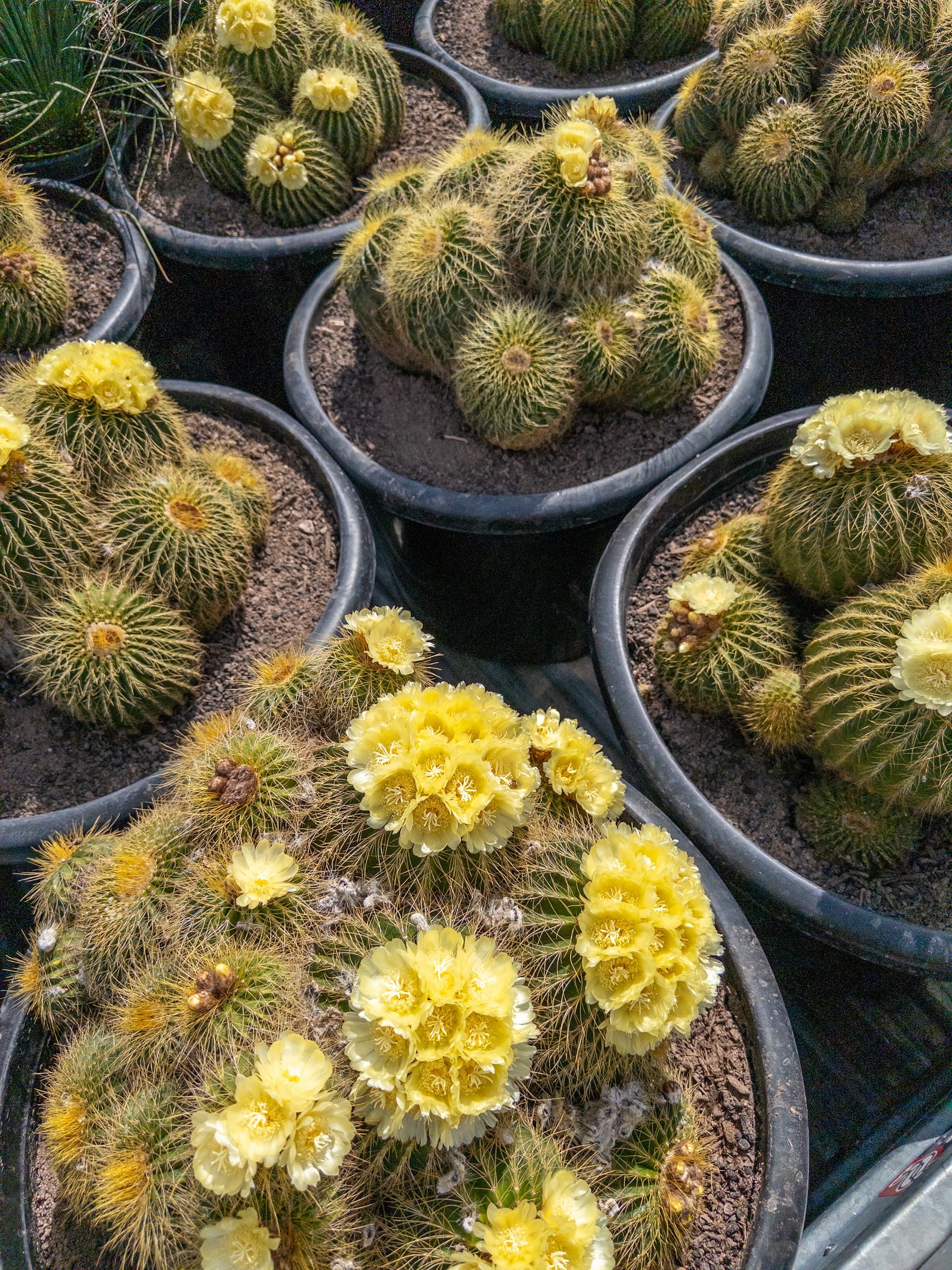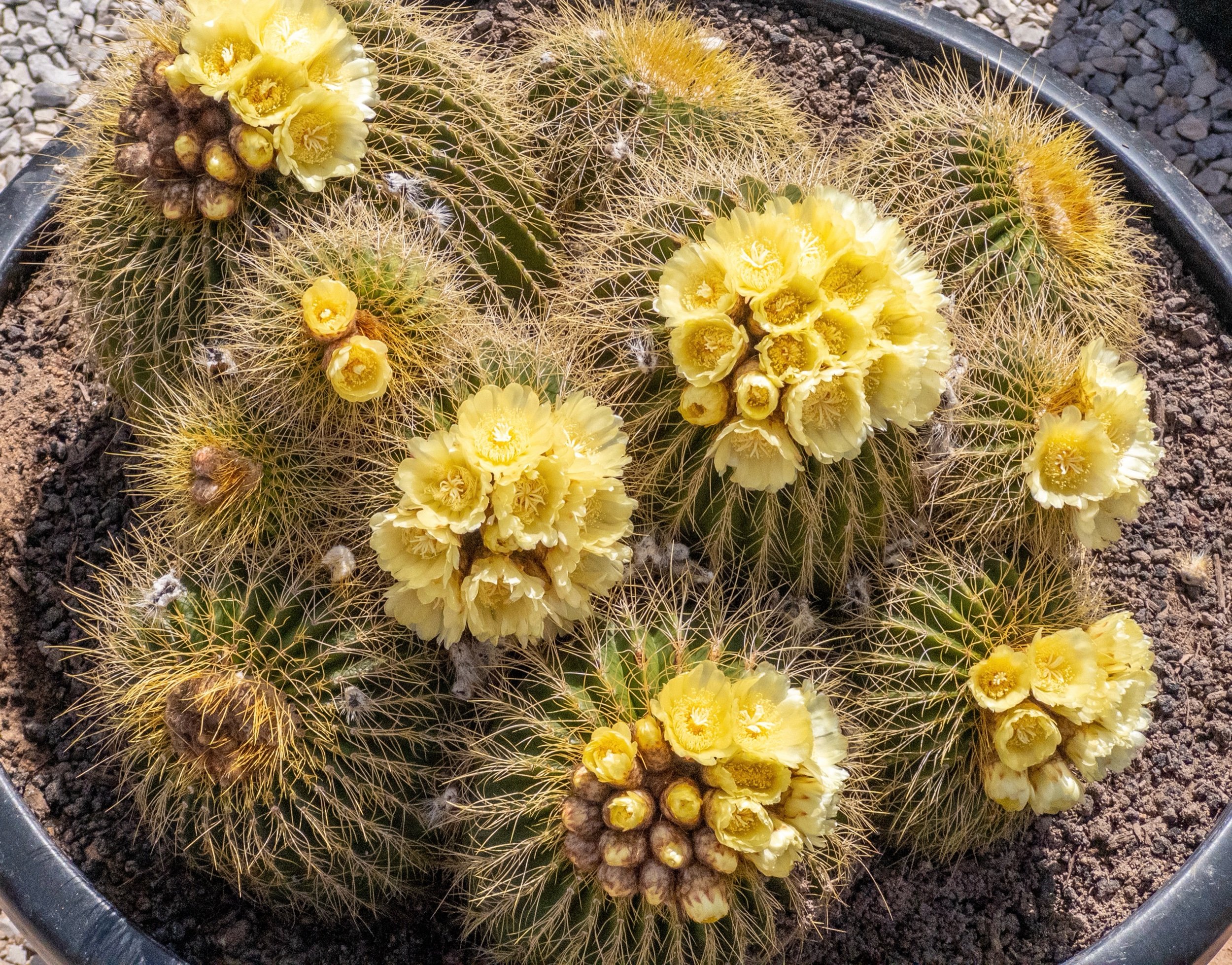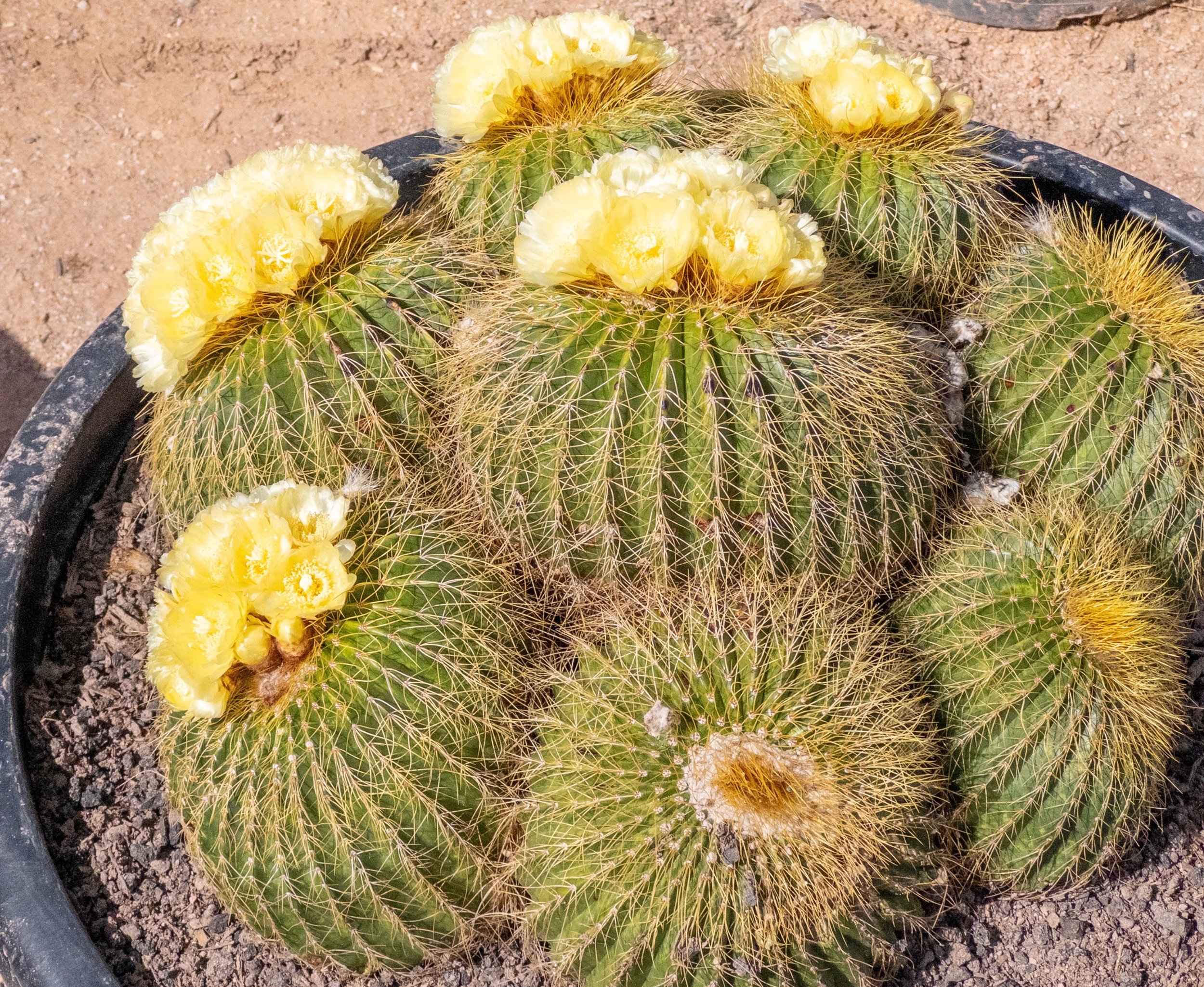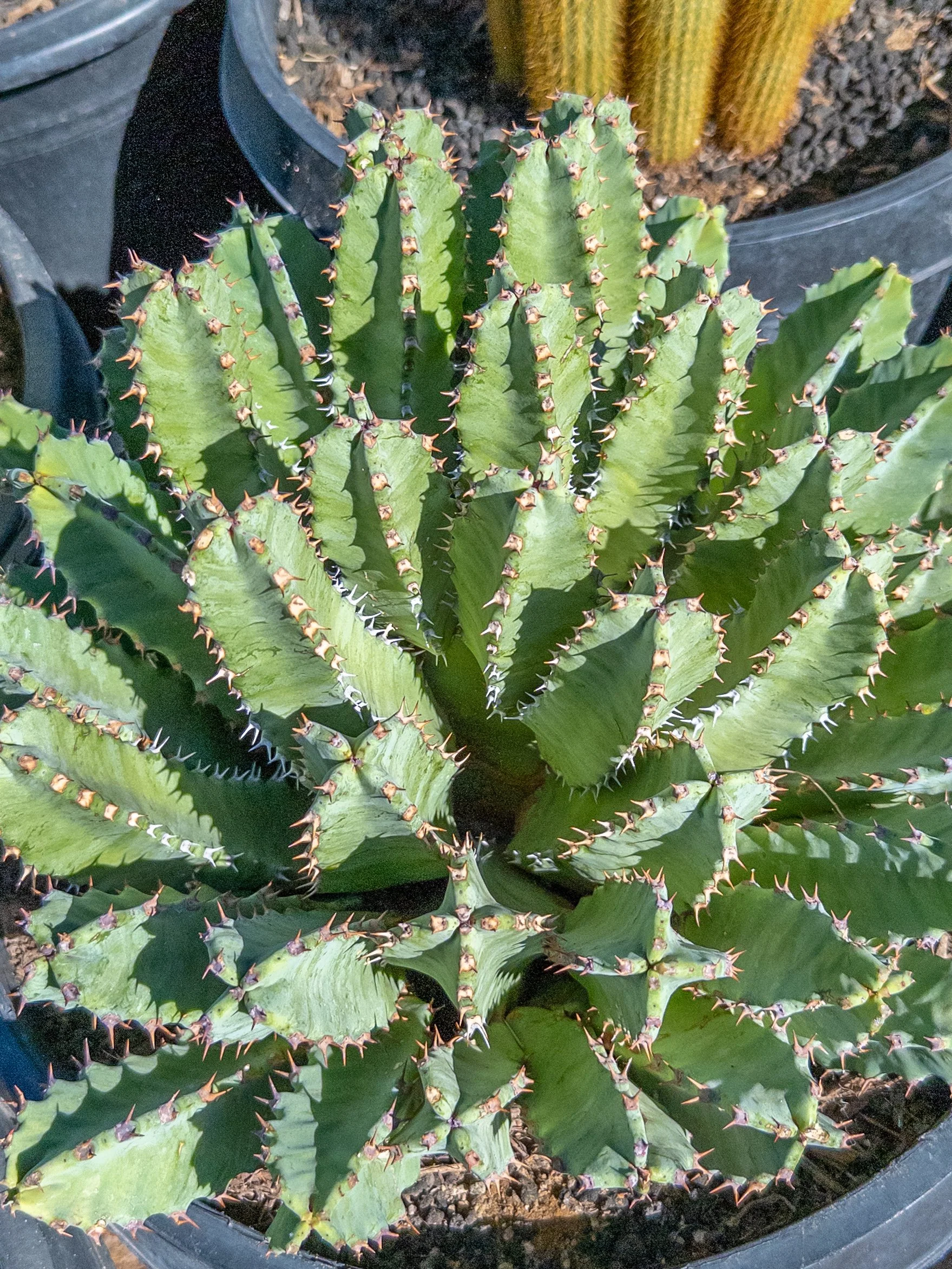 Image 1 of 3
Image 1 of 3

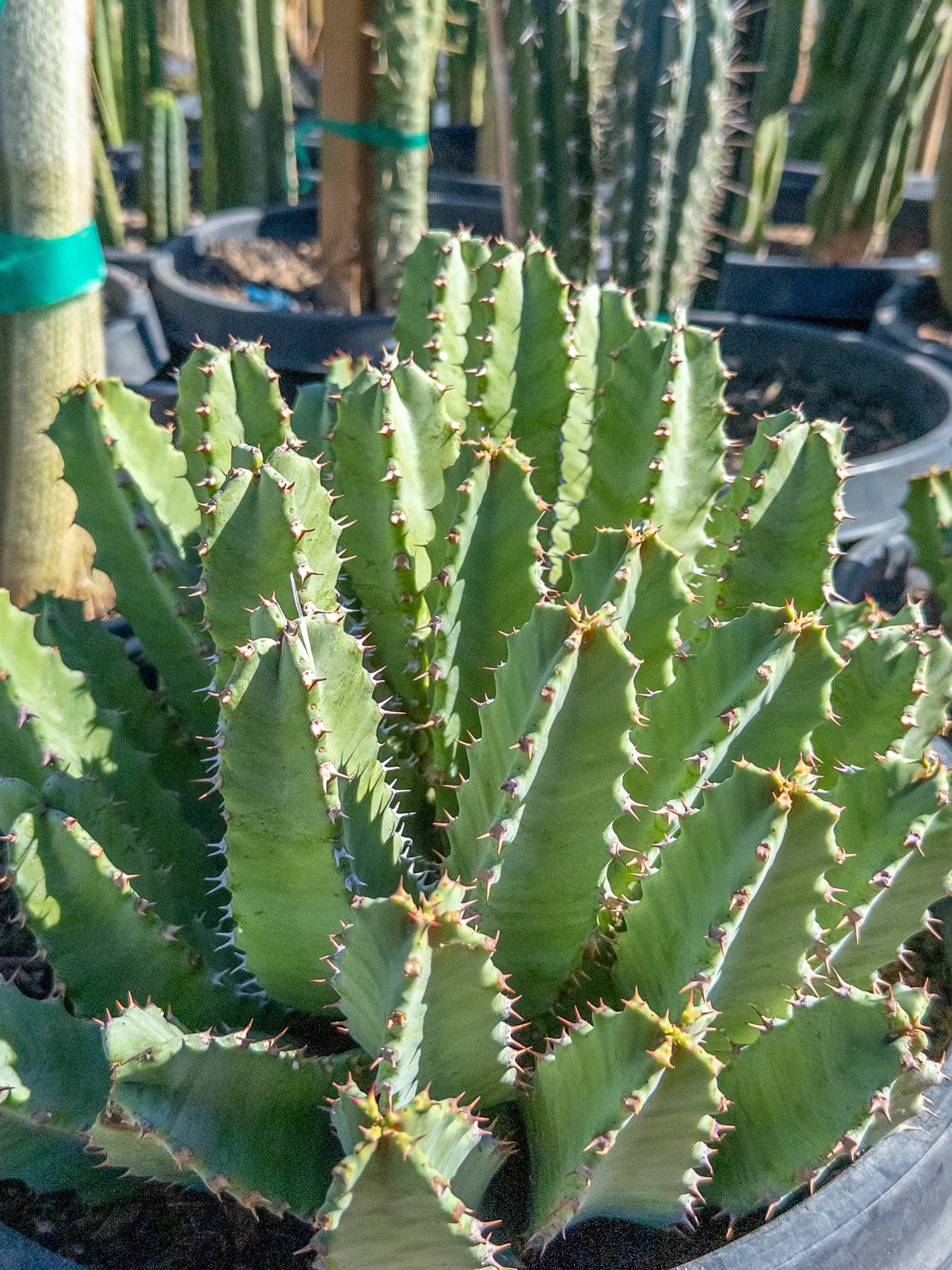 Image 2 of 3
Image 2 of 3

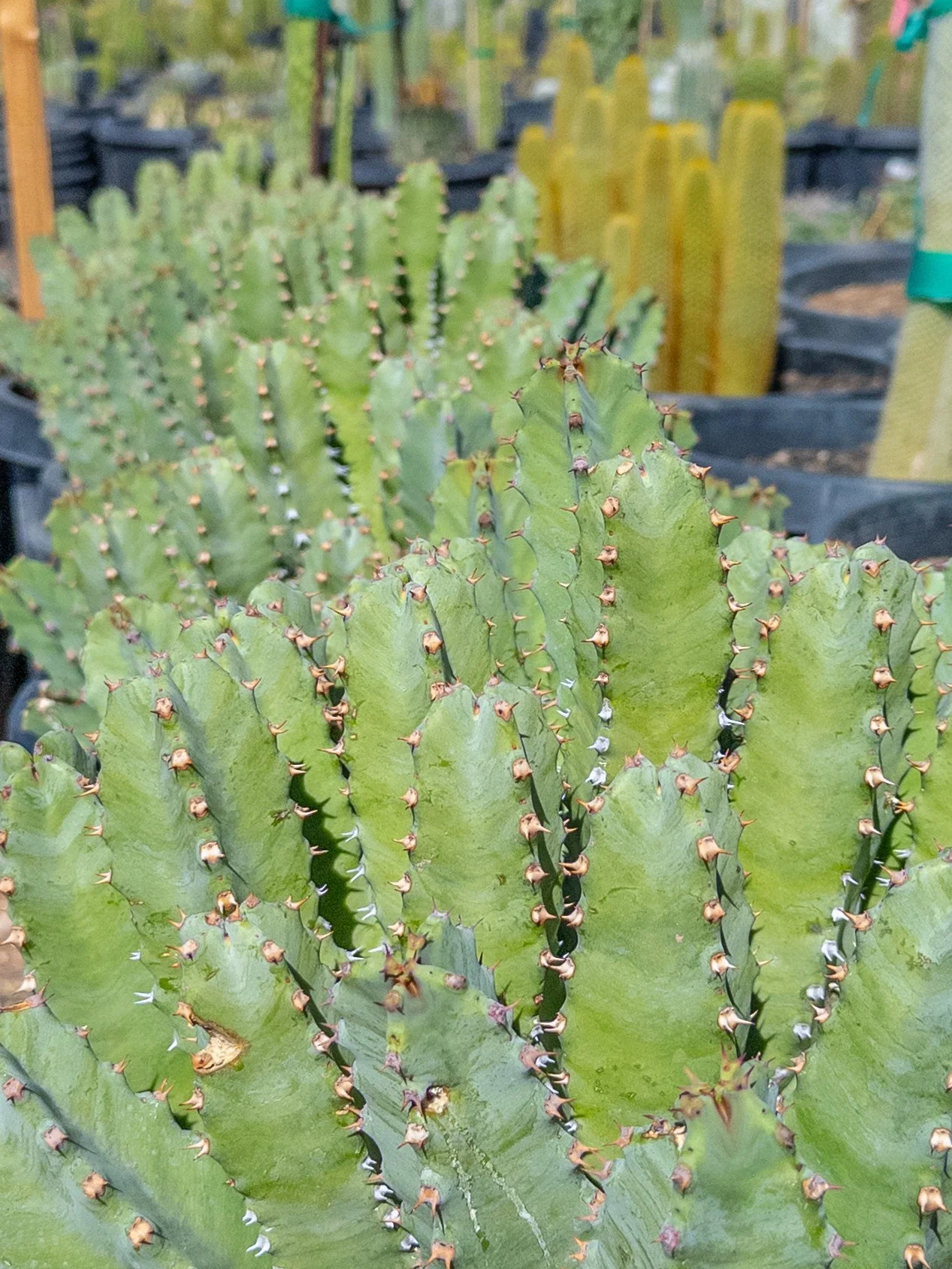 Image 3 of 3
Image 3 of 3




Moroccan Mound
Appearance: It forms dense, low-growing mounds up to 2 feet (60 cm) tall and 4–6 feet (1.2–1.8 m) wide, composed of thick, upright, four-angled stems in pale blue-green hues. The stems are spineless but edged with pairs of short, brown thorns, giving it a cactus-like look (though it’s not a true cactus). Small, yellow-green flowers bloom along the stem edges in late winter to early spring.
• Growth Habit: Slow-growing and clumping, it spreads via suckers, creating a symmetrical, geometric cluster that’s perfect for groundcover or focal points in xeriscape gardens.
• Resin Production: True to its name, it exudes a milky, latex-like resin when cut, which has traditional medicinal uses but is toxic and irritating to skin and eyes—handle with gloves.
Growing Tips
• Hardiness: Thrives in USDA zones 9–11; frost-sensitive but drought-tolerant once established.
• Light and Soil: Full sun to partial shade; use well-draining, sandy or cactus mix soil to prevent root rot.
• Water and Care: Water sparingly (every 2–4 weeks in summer, less in winter); fertilize lightly in spring. It’s low-maintenance and pest-resistant.
• Uses: Ideal for rock gardens, containers, or as an architectural accent in arid or Mediterranean-style landscapes. In cooler climates, grow it indoors or as a potted patio plant.
Appearance: It forms dense, low-growing mounds up to 2 feet (60 cm) tall and 4–6 feet (1.2–1.8 m) wide, composed of thick, upright, four-angled stems in pale blue-green hues. The stems are spineless but edged with pairs of short, brown thorns, giving it a cactus-like look (though it’s not a true cactus). Small, yellow-green flowers bloom along the stem edges in late winter to early spring.
• Growth Habit: Slow-growing and clumping, it spreads via suckers, creating a symmetrical, geometric cluster that’s perfect for groundcover or focal points in xeriscape gardens.
• Resin Production: True to its name, it exudes a milky, latex-like resin when cut, which has traditional medicinal uses but is toxic and irritating to skin and eyes—handle with gloves.
Growing Tips
• Hardiness: Thrives in USDA zones 9–11; frost-sensitive but drought-tolerant once established.
• Light and Soil: Full sun to partial shade; use well-draining, sandy or cactus mix soil to prevent root rot.
• Water and Care: Water sparingly (every 2–4 weeks in summer, less in winter); fertilize lightly in spring. It’s low-maintenance and pest-resistant.
• Uses: Ideal for rock gardens, containers, or as an architectural accent in arid or Mediterranean-style landscapes. In cooler climates, grow it indoors or as a potted patio plant.

